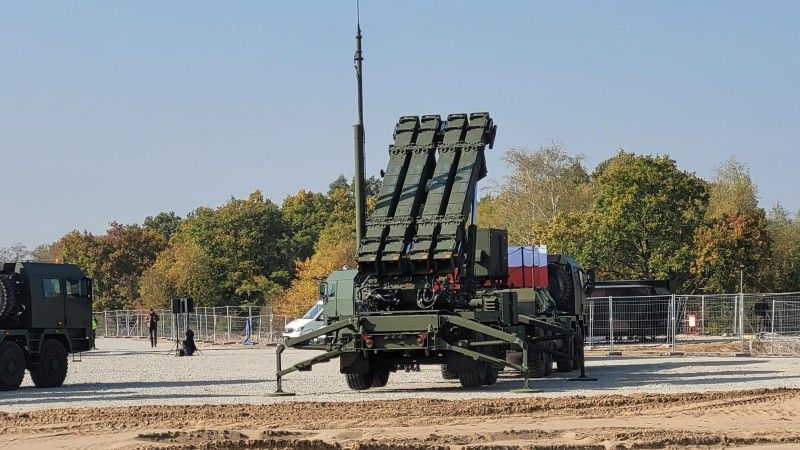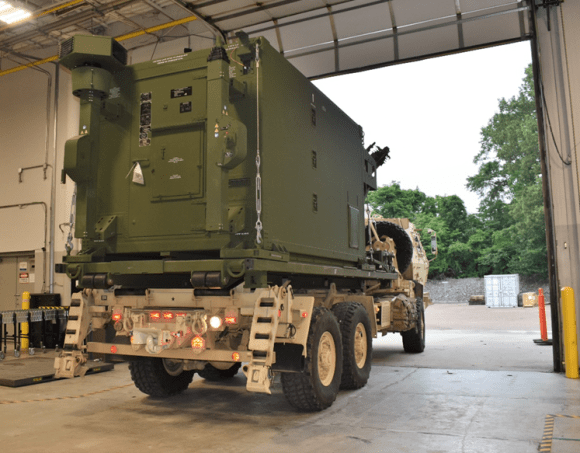Armed Forces
IBCS and Polish Patriot Systems Are Making Progress

The Integrated Battle Command System, which is being introduced to the US Army Air and Missile Defense Forces as well as to the Polish Armed Forces within the Polish Wisła project, is being prepared for the Full-Rate Production. Simultaneously, its capabilities are being developed. Deliveries for the Wisla program are taking place. As Bill Lamb, International Director, Northrop Grumman, installation of a training system for Wisła in Poland will commence soon.
IBCS is an Air and Missile Defence Battle Management System, which is set to broadly enable the "any sensor, any effector" principle in the US Army Air and Missile Defence principle force structure. Thanks to that, the various Air Defence Systems, such as for instance Patriot, will not be tightly bound to their own fire control radars. Instead, they will be able to engage targets that are detected by any available sensors integrated with IBCS, such as surveilance radars. Obviously, this will also work other way around. For instance, if a Patriot detects a target that does not have to be engaged by an expensive PAC-3 MSE missile, such as UAV, it could be engaged by other effector.
Currently, IBCS is being prepared to enter the Full-Rate Production. The Initial Operational Testing and Evaluation (IOT&E), that precedes a FRP decision, has finished in November past year. The IOT&E tests included both simulations using the Distributed Hardware in the Loop method, field exercises at training ranges against real and simulated targets such as fixed- and rotary-wing aircraft, cruise and ballistic missiles, as well as live fire Patriot missiles test.
– "Currently the results of IOT&E tests are being evaluated by the responsible US Army units. We expect the Full Rate Production decision to be taken at the end of the first quarter or in the second quarter of 2023 calendar year" – as Bill Lamb, International Director, Northrop Grumman, told Defence24.pl. – "The Initial Operational and Evaluation Testing were taking place under very challenging environment. The equipment was used by US Army soldiers, which will be operationally deployed with IBCS-enabled Patriot in the future" – added Bill Lamb.
3-43 US Army ADA Battalion will be the first unit that will obtain the Initial Operational Capability to use IBCS. The same unit has been taking part in IBCS tests. It is assumed that Initial Operational Capability will be achieved in the 2nd quarter calendar 2023. After that, IBCS-enabled Patriot systems will be able to be operationally deployed.
A Full-Rate Production decision on IBCS can be helpful for potential export sales of the system. After FRP is commenced, it will become possible to offer IBCS to other countries without using the yockey waiver procedure that Poland used within the first phase of Wisla.

Photo. US Army
In 2022 also a live fire test took place with the use of Remote Interceptor Guidance RIG-360 system, which enables an uplink to a PAC-3 MSE missile without using the Patriot radar. In a standard Patriot configuration the uplink system is placed on the Patriot radar. Thus, even if targeting data are gathered using other sources such as IBCS-integrated radars, the uplink to a missile in flight is taking place using a data link placed at a Patriot radar.
This causes some limitations of the use of Patriot, because the launchers are tethered in order to launch with a Patriot radar and to see the uplink. With RIG-360, you did not have Patriot radar at all in the architecture. In the architecture there were three Sentinel radars which have been in the inventory of US Army for years. We have demonstrated capability of IBCS to leverage the sensor data from Sentinel, which originally has not been designed to provide a fire control solution for Patriot, to act as a fire control radar for an engagement. And we have demonstrated capability to perform an uplink without an actual Patriot radar. This can help to optimize the range of the interceptor, increase the battlespace and the defended area of the ground
as Bill Lamb told Defence24.pl
The introduction of RIG-360 may change the IBCS-enabled Patriot architecture entirely, as it will be fully independent from Patriot radars. This will significantly increase the flexibility of the use of the IBCS-enabled Patriot systems. After a live fire test that took place in 2022, it is required that the development works are completed. After that, the system will be fielded. " The first integration of RIG-360 was financed from the company funds. We know that the Department of the Army has made some investment in the system in Fiscal Year 2023, we also expect investment in FY 2024 to complete the development of RIG-360 and integrate it with the baseline IBCS architecture. Any decision on a potential export of RIG-360 for international partners would have to be made by the US Department of Defense" – as Bill Lamb, International Director, Northrop Grumman told Defence24.pl.
Simultaneously with the implementation of subsequent phases of the IBCS project, the preparation and deliveries of the equipment for the first phase of Wisla program are ongoing. "We are progressing on the production of all six Engagement Operations Centres for Wisła Phase one and the six Integrated Fire Control Relays. Production of the additional six Integrated Fire Control Relays is expected later this year" – as Bill Lamb higlighted.

Photo. Northrop Grumman
A Pre-System Integration Checkout is the next step, to take place before the delivery of the system. "A Pre-System Integration Checkout will take place this year in Redstone Arsenal, Alabama. All the elements will be gathered together and checked before they are shipped from US to Poland. More than 20 Polish soliders will take part in this process. They will receive some training on IBCS use" – added Bill Lamb.
Also, checkout and installation of the ADA RT (Air Defense Artillery Reconfigurable Trainer) will take place in Poland soon. Once the system is installed, it will be possible to train the Polish soliders in country. All in all, in 2023 the manufacturing and deliveries of all US-made IBCS systems for the Wisla phase one will be completed. At the same time, training of the Polish soldiers is taking place both in USA and in Poland. Already the first phase of Wisla includes establishing training facilities in Poland.
Separately, manufacturing of Polish components of the systems, such as the Mobile Communications Centers (MCC1) and the Command Shelters is taking place. Ultimately, the Command Shelters will feature the equipment that will be moved from ICE (Integrated Collaborative Environment). Those are being built within the separate agreements between the Polish MoD and the Polish companies, though Northrop Grumman is cooperating with WZE.
With regard to Wisła phase two, the US government is working over the response regarding the 2nd phase of Wisła and Narew project. Northrop Grumman is taking part in those efforts, but the company does not comment on detailed schedules, as those are dependent mainly on the government-to-government agreements.
Recently there is an increased interest in IBCS among potential international users, also due to the war in Ukraine. "War in Ukraine has highlighted the importance of having an effective integrated air and missile defence system. There are currently around seventeen users of the Patriot system around the world. When you have Patriot in your force structure and you are thinking of modernizing Patriot system, and you are thinking of defeating the current and future threats, including those presented in Ukraine, the two options are the integration of PAC-3 MSE missile and the integration of IBCS. War in Ukraine and the increased maturity of IBCS, which is going into full-rate production are two things that cause increased interest in IBCS
as Bill Lamb told Defence24.pl.
Also, Northrop Grumman is working on integration the Lower Tier Air and Missile Defense Sensor (LTAMDS) radar, developed by Raytheon, into IBCS within a separate Army project. In future, LTAMDS will become another option for Patriot upgrade. Also, in the future the integration of Indirect Fire Protection Capability (IFPC Inc-2I), a short range air defence system with Multi-Missile Launcher and Sentinel radars is planned. In the long run other air defence systems will be integrated with IBCS, including components related to countering the new and emerging threats.
IBCS is envisioned by the Army to be used as a single command and control system for the Air and Missile Defence, to be used against all the kinds of threats, ranging from Rocket, Artillery and Mortars, UAVs, cruise missiles, fast attack aircraft that are flying inside atmoshpere, helicopters, ballistic missiles that are present both inside and outside the atmosphere. Ultimately that will be joined by the High Velocity/Hypervelocity Missiles, where you need to take into account how do you engage this kind of threat in various stages of flight. The Hypervelocity missiles are changing their trajectory in various stages of flight, so they are more difficult to defeat than ballistic missiles, but the capability to counter hypersonic missiles will be integrated with IBCS, just as another emerging threat such as drone swarms
as Bill Lamb, International Director, Northrop Grumman told Defence24.pl
